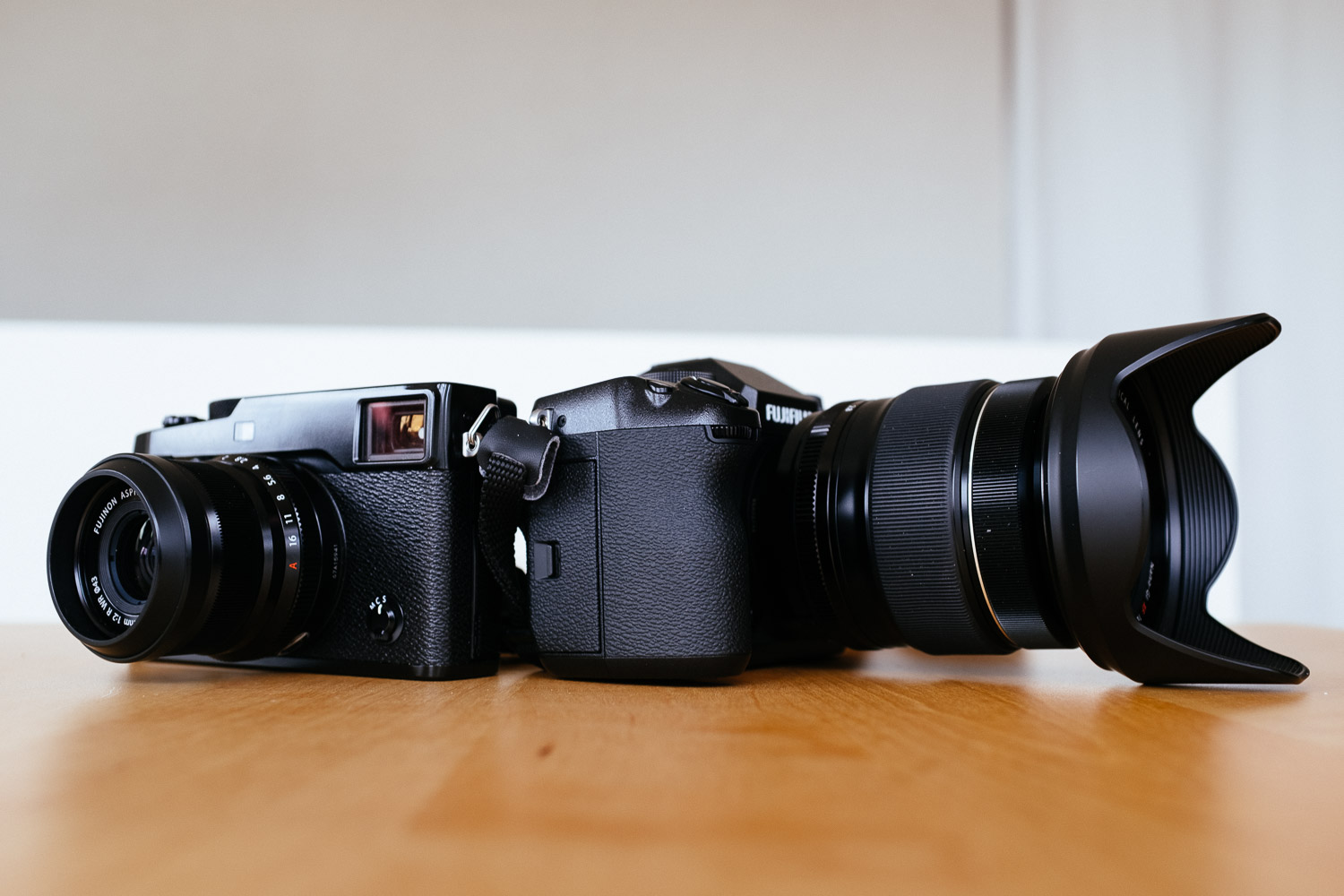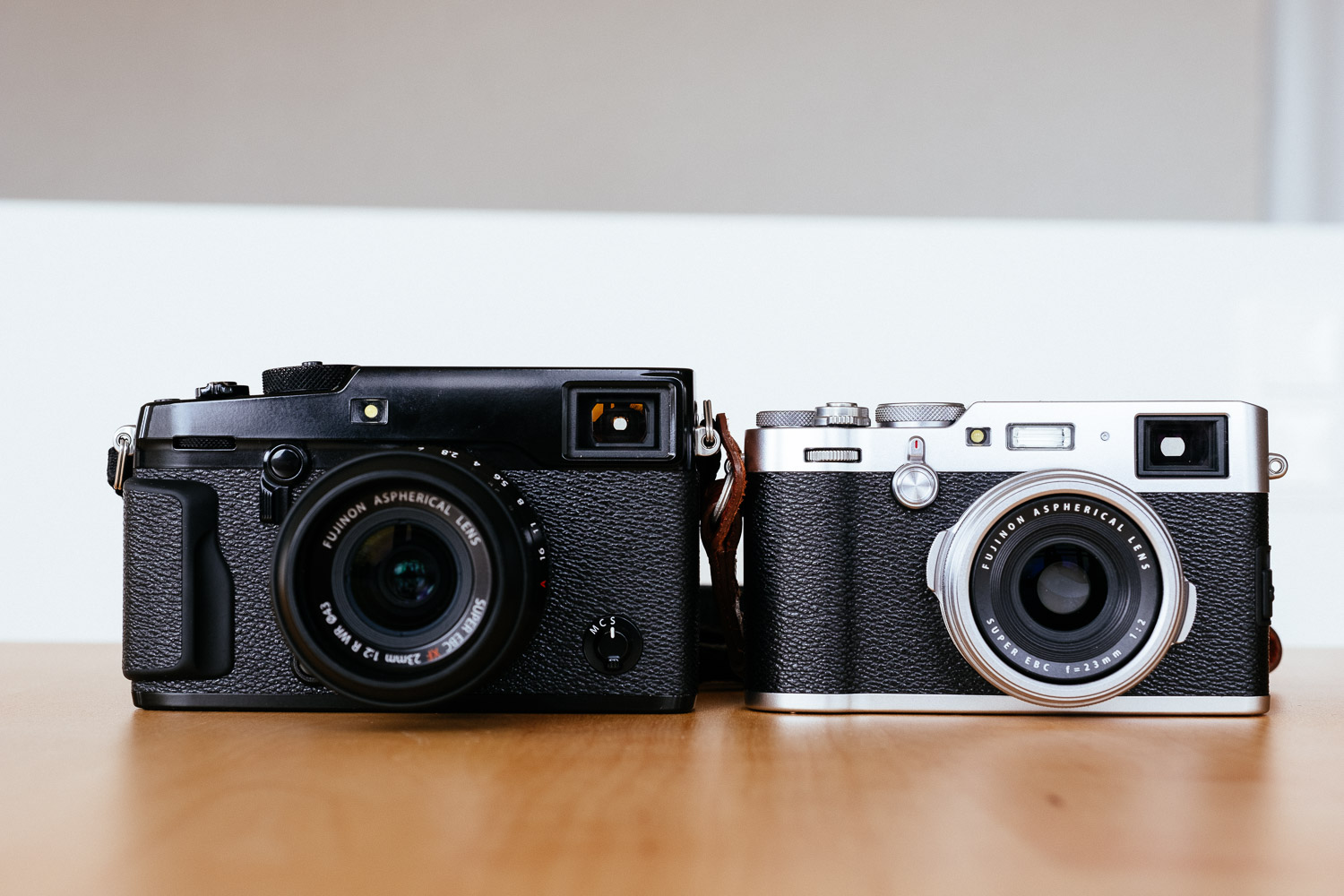 FUJIFILM X100F (23mm, f/4, 1/13 sec, ISO200)
FUJIFILM X100F (23mm, f/4, 1/13 sec, ISO200)
Unlike other camera makers Fuji offers a big variety of camera bodies. It’s easy to get confused.
But I think it is rather obvious which camera works best for which shooting style and genre of photography. Disclaimer: I have no experience in recording video so I can’t comment on that. I started to shoot with Fuji with the Fuji X100 and later progressed to X-Pro1, X-T1, Pro-2, X100F, X-H1 and X-Pro3. I still own: X-Pro2, X-Pro3 and the X-H1.
What do you want?
Of course that is a basic question but the more you know what you will use the camera for the easier it is to make a choice. For starters it’s seems like a stupid question. “I want to take pictures with it.” But there are many different genres in photography. There is travel, landscape, portrait, wildlife and birds, sports, kids at play, close up, street, architecture, … You get the picture.
Some areas of photography are more demanding on the cameras AF and frame rate than others. Sport and kids at play are more demanding than landscape, portrait or close ups. If you haven’t settled in one area yet it makes sense to remain flexible. Maybe spend less on the camera first and more on lenses. If you know your favourite field of photography you can get the latest camera model that fits your application best: Pro, T or H.
One last remark on lenses: Camera bodies come and go, lenses usually stay, ie.e. the XF 35/1.4R and the XF14/2.8R that I own for 10 years now are still my favourite lenses.
The different body styles: Fuji doesn’t have one top model and lesser cameras like most companies. Fuji has 3 top camera lines. Pro, T and H. I have no idea what Pro and T stands for but I can remember that I read somewhere that H stands for Hybrid. Hybrid of still and video camera. So if you are into video I guess those would be the models to get.
 FUJIFILM X-H1 (36.5mm, f/5.6, 1/8 sec, ISO200)
FUJIFILM X-H1 (36.5mm, f/5.6, 1/8 sec, ISO200)
the X-Pro bodies mimic the look of old range finder cameras and even though they are no range finder cameras they offer a very special shooting experience for some applications but of course compromise on other areas. The most obvious is the hybrid viewfinder (optical/EVF) and the very unique display design on the X-Pro3. While I really don’t care too much for the LCD design and use the optical viewfinder only sporadicly I can’t hide that I love those cameras. Yes, I’m biased. I have tried other body designs too and I can see their benefits I still prefer the X-Pro bodies. Btw. The X-Pros are very different from the X-series regarding size of the body and the controls.
What makes the X-Pro bodies special is that they don’t try to serve everyone and every application. These are cameras made for travel and street photography preferable with small and light prime lenses. As simple as that. Sure you can shoot the 100-400 with it or any other lens but where the X-Pro works best is in combination with the excellent 14/2.8, the 35/1.4 or one of the small f2 primes. If you want to keep it simple and your gear small and light this is the perfect camera for it. If used with small primes nothing comes even close in my opinion. Well, Leica perhaps.
the X-T bodies: I shot with the X-T1 extensively before the X-Pro2 came out. I loved it because it was so small and light. The controls were nice to and the EVF was miles better than what I had on my X-Pro1. Unfortunately the X-T1 was not build like the X-Pro bodies. I used to shoot it in demanding climates: South East Asia, India, the South West of the USA in summer. After two years it looked really bad. The card door bent and the rubber on the grip had become wider and looked like it could get off every minute. My X-Pro2 shot for 6 years and the very same places still looks like new.
The later iterations improved on build quality but also got much bigger and heavier. A friend has the X-T3. It looks much more robust but it is bigger and heavier and with the integration of IBIS the X-T4, T5 got even bigger and heavier. They are still more compact than DSLRs but who still shoots a DSLR today? Still the X-T5 might be the best option for general photography that could handle anything but fast action. I think Fuji should try to reduce size and weight with every new version with the target to get as close as possible to the X-T1 and I guess I’m not alone with that. But all in all I think the X-T bodies are brilliant and a joy to shoot.
the X-H bodies: I bought the X-H1 as a second body to my X-Pro2 when the price came down to a level that it would be madness to buy the X-T30 instead. The X-H1 has excellent build quality and the X-H2 and X-H2S look very similar. What is different is that now not only the exposure compensation dial is gone but also the shutter speed dial and the ISO dial. Instead there is a big, fat mode dial like on most modern cameras.
Of course that step caused some controversy on dpreview but I would not worry too much. For me the X-H2S is the sport, action, wildlife and bird photography camera from Fuji. Of course it can also handle the “slower” stuff but action is where it shines. I played with it when I was in Japan in December. It’s a little smaller than the X-H1which is good but it still feels very dense. If I would still be into bird photography or if I would need a camera for fast action or kids at play this would be my camera, no question about that. There is also the X-H2, a model with a 40MP sensor, but I would prefer the X-H2S because of its amazing 40 fps with AF! A real speed demon from Fuji! Since the introduction of the X100 and the X-Pro1 Fuji has come a long way. If you don’t care about dedicated dials for shutter speed, ISO and exposure compensation this could be your perfect camera for general photography because it never hurts to shoot with a camera that is fast even if you don’t need it most of the time.
Conclusion: For the travel and street photographer who uses mostly small primes the choice is obvious: X-Pro3 or X-Pro2 in case you don’t like the LCD design of the X-Pro3. For the action and wildlife/bird photographer it is very clear too: X-H2S. For those focused on landscape or portrait photography I think the new 40MP looks very attractive. So here you have it: there is a camera for everyone.
Some last thoughts about the rear-LCD designs of Fuji cameras. I get it that Fuji likes to experiment with every aspect of the user interface but regarding the rear-LCD I would prefer if they keep it simple. I never had a problem with the fixed rear screen of the X-Pro1 and Pro2. I think I prefer it because there is one less thing to worry about. I also preferred the screen designs of the X-T1 and the X-H1 over fully articulated screens. So if Fuji would ask me I would recommend a fixed LCD screen on the X-Pro, a tilt screen on the X-T and a fully articulated screen on the X-H bodies.
